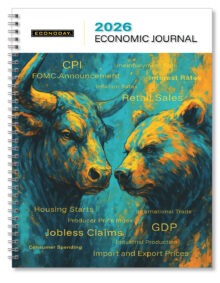The announcement that St. Louis Fed President James Bullard will be stepping down as of August 14 means that the most senior among the District Bank presidents is leaving office. Bullard was sworn in on April 1, 2008 and is the last among the presidents who was on the FOMC during the Great Recession. The next most senior is Cleveland’s Loretta Mester who has been in office since June 1, 2014.
Unless there is an announcement soon, that will mean two of the 12 Fed Districts will not have a current president. The Kansas City Fed, despite a lengthy search, has yet to find a replacement for Esther George who left in January. In the case of Kansas City, apparently the search is focused on getting a community banker in the position. It is notable that after the Dodd-Frank Act required a member of the Fed Board of Governors to have expertise in community banking, it also took a long time to find someone willing to fill that spot. The hang up seems to be the necessity of complying with rules regarding personal wealth to prevent conflicts of interest. St. Louis’ focus on data and research may make the search for Bullard’s replacement easier.
The next presidents likely to announce their retirement are Mester and Philadelphia’s Patrick Harker. There is a mandatory retirement age for District Bank presidents of 65 unless they are appointed after turning 55. The current 5-year term for all presidents ends February 26, 2026. In 2026, both Mester and Harker will be over 65 and in office about 12 and 11 years, respectively.
Turning to the Fed’s Board of Governors in Washington, the Senate Banking Committee has yet to recommend the renomination of Governor Lisa Cook to a new 14-year term when her current term completes January 31, 2024, nor for the nomination of Adriana Kugler to an incomplete term ending January 31, 2026, nor for Governor Philip Jefferson to fill a four-year term as vice chair concurrent with his term as governor which ends January 31, 2036.



 Econoday’s Global Economics articles detail the results of each week’s key economic events and offer consensus forecasts for what’s ahead in the coming week. Global Economics is sent via email on Friday Evenings.
Econoday’s Global Economics articles detail the results of each week’s key economic events and offer consensus forecasts for what’s ahead in the coming week. Global Economics is sent via email on Friday Evenings. The Daily Global Economic Review is a daily snapshot of economic events and analysis designed to keep you informed with timely and relevant information. Delivered directly to your inbox at 5:30pm ET each market day.
The Daily Global Economic Review is a daily snapshot of economic events and analysis designed to keep you informed with timely and relevant information. Delivered directly to your inbox at 5:30pm ET each market day. Stay ahead in 2026 with the Econoday Economic Journal! Packed with a comprehensive calendar of key economic events, expert insights, and daily planning tools, it’s the perfect resource for investors, students, and decision-makers.
Stay ahead in 2026 with the Econoday Economic Journal! Packed with a comprehensive calendar of key economic events, expert insights, and daily planning tools, it’s the perfect resource for investors, students, and decision-makers.